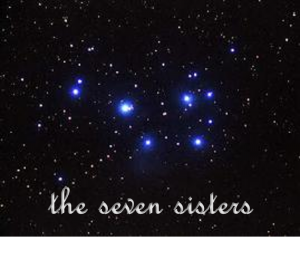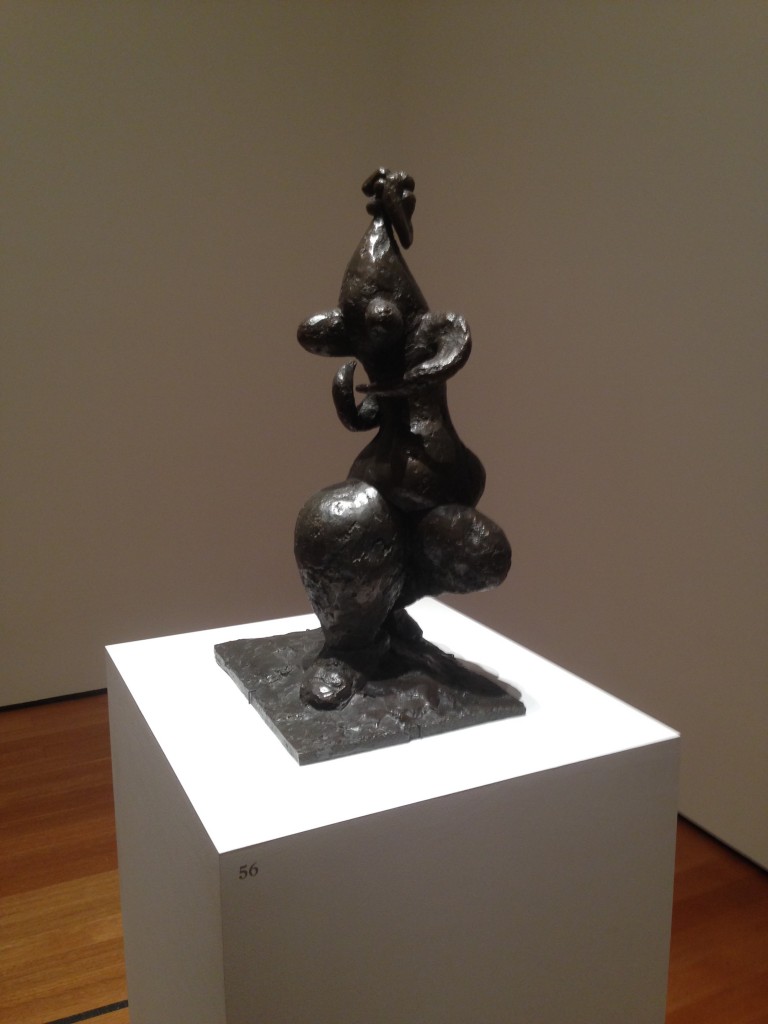In between episodes of flirting shamelessly with the universe and examining cubism and misplaced ears or whatnot in paintings, Pablo Picasso apparently could not simply hold still. Even while the Nazis were nosing around his studio, he was always busy. Creating. Making. In plaster, metal, wood, bronze — whatever junk came to hand, whatever met the Muse and withstood her blandishments became a wildly improbable woman, a cat, a girl jumping rope, dancers, a bull, a goat. Broad sheets of metal, spindly sticks of it, twisted, nearly moving on its own. Bulbous heads, rough surfaces, gigantic, bright things squatted ponderously in his imagination, while tiny, subtle things rolled underfoot like pebbles. Seemingly random connective collections of wood, gargoyles of stone, bands of color and sheer white and dense blackness. And over all flared silent, pulsating letters, spelling out — A – R – T. Picasso was a Maker, in the finest non-hipster sense of the word, supported by his community, which quietly thumbed its noses at the fascists who would deny creation. Poetry Sorceress Liz challenged us this month to our first ekphrastic poem of the year. The Poetry Sisters looked at a few sculptures from the Picasso show Liz attended in New York and took her challenge to become Makers in our own right. (Image courtesy of Liz Garton Scanlon:)
Picasso painted and sculpted myriad women, examined varying aspects of the female form, some clearly women, others seeming to portray more than their mere forms. It definitely occurred to me that I didn’t know what Picasso was saying with this version of “Woman.” I don’t know exactly what appeals to me about this sculpture except that it appears to be … sturdy. Solid. Rooted, like an elemental volcanic upswelling solidified legs and walked on land. Maybe the asymmetry also says something about women themselves – though what, I can’t quite say. What I took at first glance to be bulbous, protruding eyes are apparently breasts, and the head is… microcephalic. Picasso was rather less focused on how well a woman could think, perhaps?? What did it mean, anyway, to be one of Picasso’s “Women?” That you couldn’t hear, because you had no ears? Did you ever listen, or do anything but endlessly nurture/entice with your pop-art breasts? Ah, never mind what he was trying to do – I think our vision is more important this week, right?
Once I decided on my image, I decided to work with the pantoum form, which I’ve worked with before somewhat extensively. If you’ll recall, it’s similar to a villanelle in that there are repeating lines – the second and fourth of each stanza are repeated as the first and third lines of the next. I like pantoums because one merely needs to come up with one good “true” quatrain, and then twist it. Sometimes it’s almost easy… until it’s not…
I cannot believe how fast the year is rushing onward. (Where the heck did January go?!) Mardi Gras has been colorfully dancing along through New Orleans, and soon come the inevitable days of quiet as people observe Lent – or 40-day hangovers. Or both. The Monkey chatters and scolds as the Lunar New Year swings toward another brilliant festival, a bright parade of lions and fireworks in the dead and cold time of year. All of this swirled through my mind as I tried to combine ideas about art, about the inherent strength of humanness, of womanhood, of old materials making new starts, of coming from the elements into Elemental Beings.
quia lutum es: a memento for Picasso’s Woman
remember thou art mud
its roots will beckon you
emerge from your inertial sludge
arise, and become new
those roots will beckon you
change choices into tears
and rising, coming into “new”
is harder than you fear —
Change! Choose! let go your tears
Breathe life in sculpted clay
It’s harder than you fear,
But art’s the soul’s doorway.
Breathe life. Into the clay
Drawn from inertia’s sludge
This art, your soul’s doorway
remembers: thou art mud
The poems this month are quite varied — short and snarky, pointed and painful, long and elegiac, coming at these works of art indirectly and directly, circling, probing, seeking out and finding meaning in all kinds of ways. I think you’ll be pleasantly surprised, so don’t forget to visit:
The lady, Laura who knows what she likes;
The cat-lady, Sara whose Cat… could care less about you;
Liz, who knows better than to listen to any voices but her own;
Kelly, who has myriad but not quite thirteen ways of looking at a sculpture;
And wrap up your visit with Tricia, who has thrown out the Poetry Friday Welcome Mat with thoughts on Picasso in peace and war.
Memento lutum, folks. We’re are all such things as mud puddles are made of…it is what art we make of our mud, our clay, that counts. Happy Friday.


I will embrace my muddy messy life and remember this: “But art’s the soul’s doorway.”
(PS–I’m in awe of your skill with pantoums!)
Such a lovely poem you’ve drawn from a piece of art that I honestly have no comprehension of! You’ve breathed life into it, and your words are light. My favorite lines are: “emerge from your inertial sludge
arise, and become new” Even as we go into Ash Wednesday (echoed in your first and last lines, right?) I am holding onto that charge!
“And over all flared silent, pulsating letters, spelling out — A – R – T. Picasso was a Maker, in the finest non-hipster sense of the word, supported by his community, which quietly thumbed its noses at the fascists who would deny creation.”
Dang. I totally skipped any kind of intro to my poem because I couldn’t think of how to encompass even a tiny bit of Picasso in prose, and here you’ve nailed him—and ranged widely in your questions, too, making me feel those lines of yours “Breathe life; into the clay;” are what YOU do best, you non-hipster art Maker, you.
O Wise and Brilliant One, I bow to you. Fine, fine poem. Also agree with Liz about your prose — love the questions you ask, the possibilities. The sculpture’s very small head has me wondering . . .
Like Tricia and Liz, I find myself as blown away by your prose here as your poem. I do think that he saw women as sex objects (first and always), as is borne out by the fact that the woman who bore his two children, and had the audacity to want to make her OWN art, is the only one who ever left him – later telling tales of mistreatment and stories about his rages.
Especially love these lines:
“Breathe life in sculpted clay
It’s harder than you fear,
But art’s the soul’s doorway.”
Ain’t that all the truth?
I love the questions you’ve raised in your introduction about the sculpture itself. I often look at works like this and wonder “What the heck was the artist thinking?” I suppose that’s why I played it safe and took the cat. I’m not much a risk taker when it comes to these challenges, but you my dear, well you are!
I love that used the pantoum and found such perfect words. The last stanza is breathtaking, but my favorite line in the entire poem is “Change! Choose! let go your tears.” That is going to be my mantra for the year.
Well done my sister!
Tanita!!! I love your prose around this poem nearly as much as the exquisite pantoum itself. Oh mercy, your musings… they are so funny and so wise. Also, “thou art mud” is such a grounding and humble thought. Thank you for this…